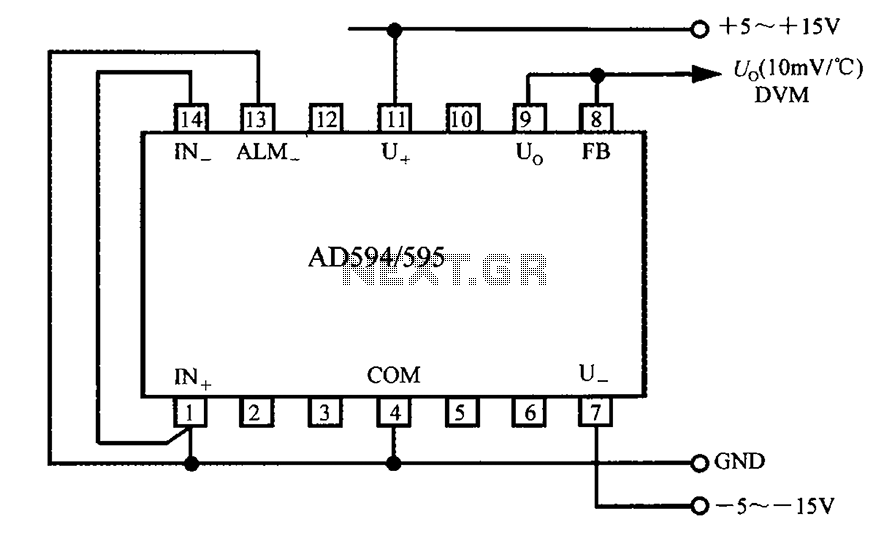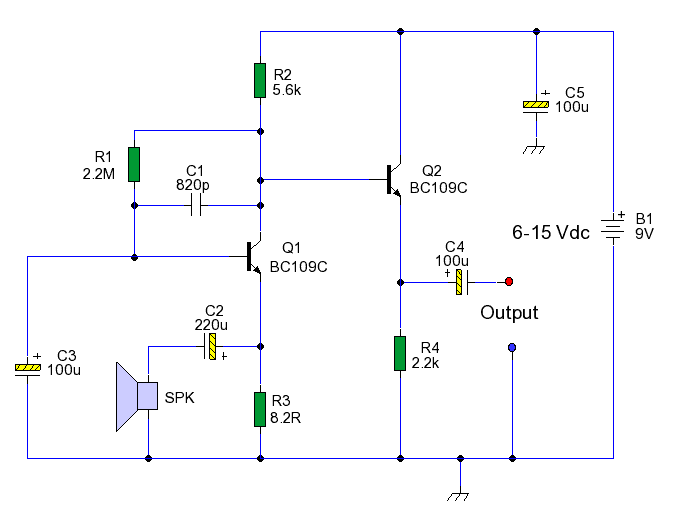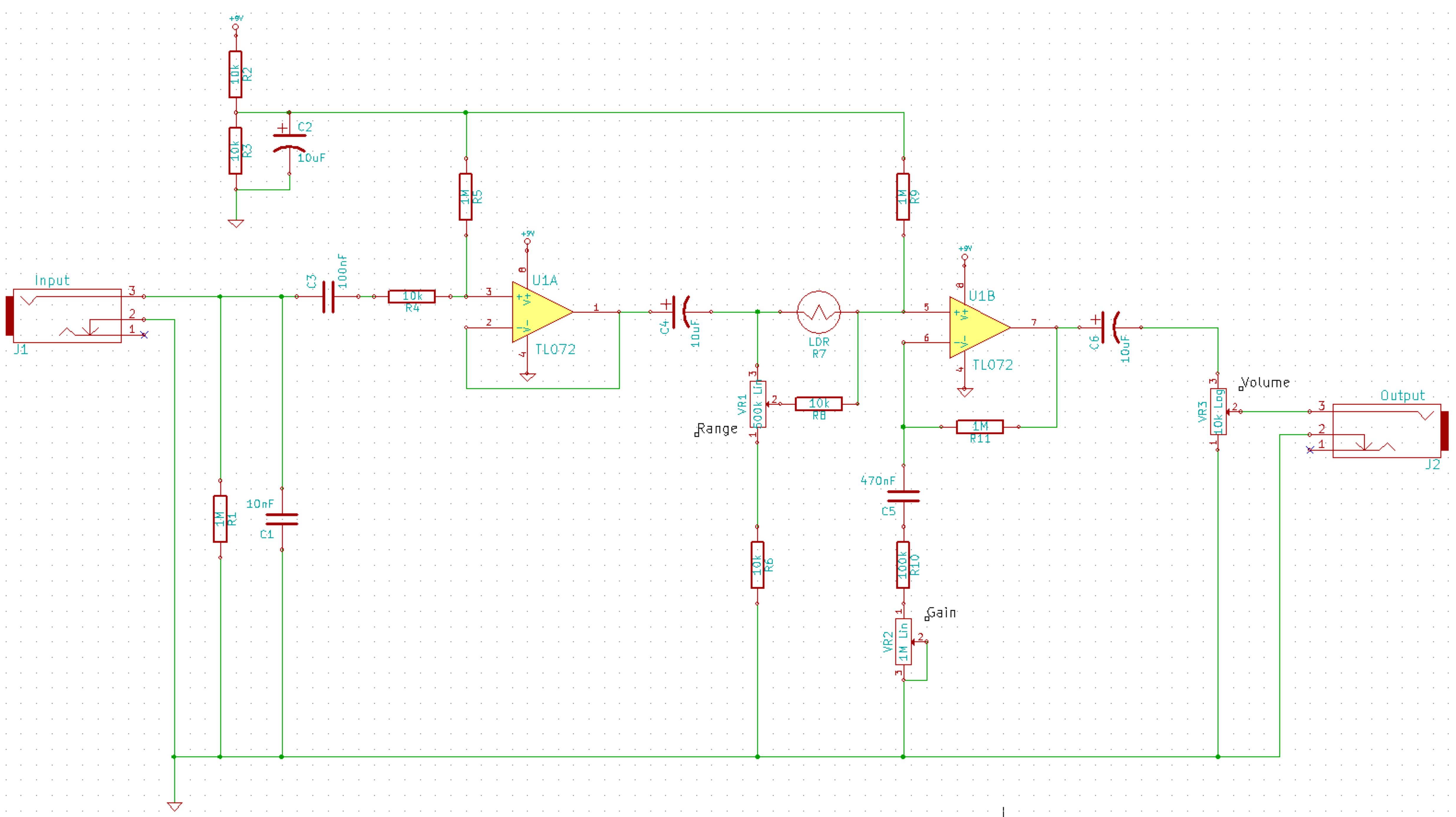
Thermocouple cold junction compensator AD594 595 centigrade thermometer circuit diagram

The AD594/595 can be configured to measure temperature in Celsius. In the circuit diagram, the IN+ and IN- terminals should be shorted to the COM terminal. The output voltage (Uo) has a temperature coefficient of 10 mV/°C, which can be sent to a digital voltmeter (DVM) for measurement and display of the temperature value.
The AD594 and AD595 are precision temperature sensors that provide a linear output voltage proportional to the temperature in degrees Celsius. To utilize these devices effectively, the circuit configuration requires that the IN+ and IN- terminals be connected to the common (COM) terminal. This configuration ensures that the sensor operates within its designed parameters, allowing for accurate temperature readings.
The output voltage, Uo, generated by the sensor is linearly related to the temperature, with a temperature coefficient of 10 mV/°C. This means that for every degree Celsius change in temperature, the output voltage changes by 10 mV. This linear relationship facilitates straightforward calculations when interfacing with measurement devices.
To measure the output voltage accurately, a digital voltmeter (DVM) is employed. The DVM converts the analog voltage signal from the AD594/595 into a digital format, allowing for easy reading of the temperature value. It is important to ensure that the DVM is calibrated and has sufficient resolution to display the temperature readings accurately.
In summary, the AD594/595 temperature measurement circuit is a simple yet effective solution for monitoring temperature in Celsius. The proper configuration of the IN+ and IN- terminals with respect to the COM terminal is crucial for accurate measurements, and the output voltage's linear relationship with temperature simplifies the process of obtaining and displaying temperature values.AD594/595 can also be configured to Celsius, the circuit shown in FIG. This time should be IN +, IN- terminal and COM shorted, the output voltage Uo temperature coefficient of 10mV/, can be sent to the DVM to measure and display the temperature value.
The AD594 and AD595 are precision temperature sensors that provide a linear output voltage proportional to the temperature in degrees Celsius. To utilize these devices effectively, the circuit configuration requires that the IN+ and IN- terminals be connected to the common (COM) terminal. This configuration ensures that the sensor operates within its designed parameters, allowing for accurate temperature readings.
The output voltage, Uo, generated by the sensor is linearly related to the temperature, with a temperature coefficient of 10 mV/°C. This means that for every degree Celsius change in temperature, the output voltage changes by 10 mV. This linear relationship facilitates straightforward calculations when interfacing with measurement devices.
To measure the output voltage accurately, a digital voltmeter (DVM) is employed. The DVM converts the analog voltage signal from the AD594/595 into a digital format, allowing for easy reading of the temperature value. It is important to ensure that the DVM is calibrated and has sufficient resolution to display the temperature readings accurately.
In summary, the AD594/595 temperature measurement circuit is a simple yet effective solution for monitoring temperature in Celsius. The proper configuration of the IN+ and IN- terminals with respect to the COM terminal is crucial for accurate measurements, and the output voltage's linear relationship with temperature simplifies the process of obtaining and displaying temperature values.AD594/595 can also be configured to Celsius, the circuit shown in FIG. This time should be IN +, IN- terminal and COM shorted, the output voltage Uo temperature coefficient of 10mV/, can be sent to the DVM to measure and display the temperature value.





